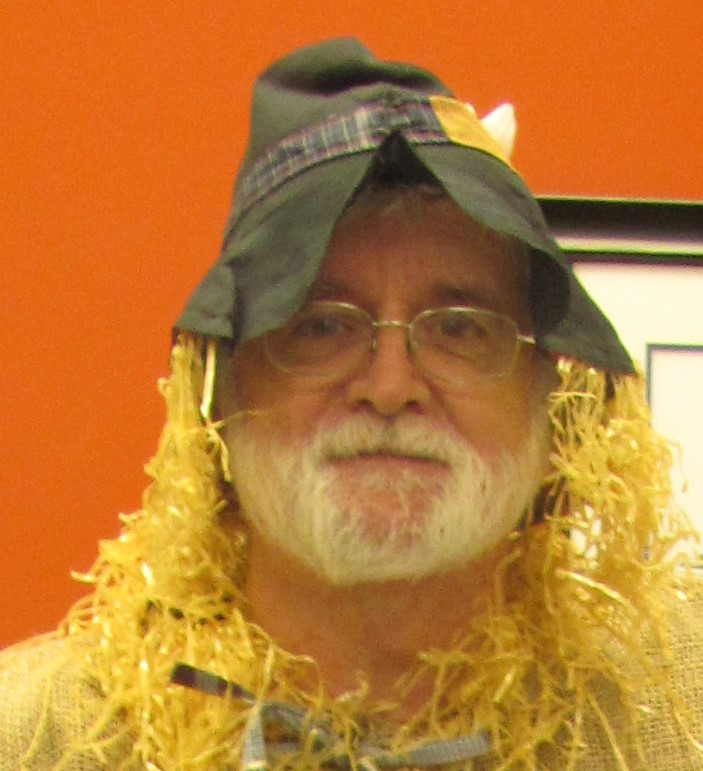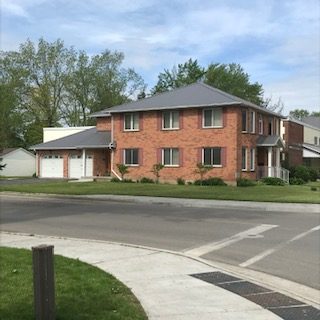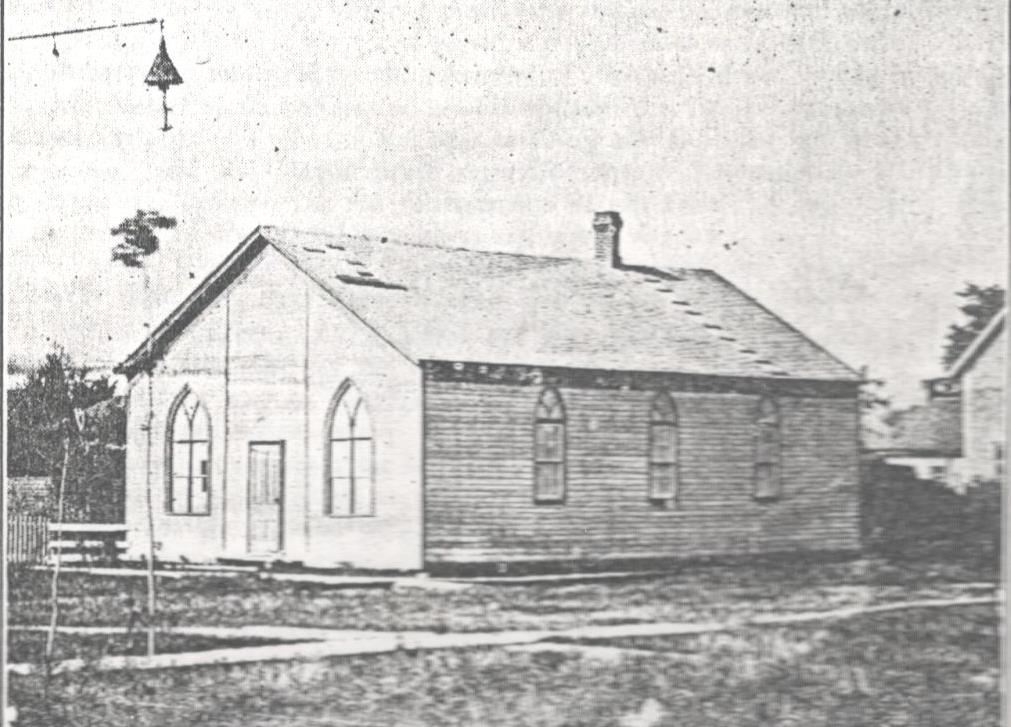
July 2022
This is information was handed down from my father (Carroll Kenney – better known as Carl) and may be modified with time but the essence of it is likely very true. My great great grandfather Thomas Carroll was a timekeeper or paymaster for the company working on the local canal; likely the Feeder Canal that connected the Welland canal with Dunnville and the Grand River. There was a dispute over the pay owed to one or more of the workers and this ended up in a confrontation in which Thomas was badly beaten. The story continues because his wife, Sarah the former Sarah Martin then walked with a child on her back (likely Mary – possibly Elizabeth) from St. Catharines to Dunnville along an old Indian trail to take care of her badly injured husband. One of her other children (likely Bernard) had to walk by her side. Thomas and Sarah lived on Pine Street in Dunnville near the present location of St. Michael’s school and church. Some of his property was donated for the church by his daughters Elizabeth and Margaret. The original house still exists (or did) and was a log cabin. It has been re-sided and does look not like one today.
- Brian Kenney – December 4, 2014
It is not known what the intention was regarding settling in the Dunnville area, nor is it known if Thomas continued to work for the Feeder Canal construction company, but the Carroll family did settle in Dunnville. One can guess that Thomas either left the company or was asked to leave as result of the conflict. I must make clear here that there is neither accusation nor suggestion that Thomas had profited from any pay dispute.
The year in which the above scenario took place was likely about 1840 to 1841 which allowed me to suggest the names of the children that accompanied Sarah to Dunnville. Just to bore you a bit I believe I can identify the year using a number of factors which may be of interest; or maybe not so much! We know that the lock at Port Maitland was first opened for business in 1842. We know that Thomas arrived in Canada after 1840 as Mary was born in the United States around or prior to that year and her older brother Bernard was born in Ireland in 1838. Elizabeth was added as a possible candidate to be the infant in her mother’s arms as she was born in Thorold in 1842 and would have been an infant or gestating in the year I have suggested. The next child in the family was Margaret who was born in Dunnville in 1845. Now here is the kicker! The above Mary disappeared from all my genealogical records which suggest she may have died as an infant and therefore not alive during her mother’s long trek to Dunnville. I throw in this mumble jumble to give you an idea of the research that can go into a short story from the past! The research for this story will continue as I go on to tell you about the connection of the Carroll family to the establishment of St. Michael’s Roman Catholic Church in Dunnville.
Thomas and Sarah would settle in Dunnville and would raise at least three, maybe five children if Mary survived. We know that in 1861 they lost a 10 year old child named Sarah. We know three of their children would live into adulthood. Bernard would move to Iowa and marry Ellen Williams. He would remain there until his death in 1898. Elizabeth would marry John Kenney (Brian’s grt grandfather) dying at the home of her son Thomas the station manager for the TH&B in Port Maitland. Finally there was Margaret who married John Bolger.
There were two churches
The Barn Church
In a “Special Edition” spread in The Dunnville Chronicle dated Friday June 18, 1937. The article is titled “Golden Jubilee Church of St. Michael the Archangel Dunnville, Ontario.” It mentions John Bolger along with Thomas Carroll; however without my doing a property search I am not aware of the date. The mention is in regard to a church built under the direction of Father John McNulty. Not to be confused with the fact that early Masses were held in various locations including a barn, this church was often referred to as “the barn.”
In short it reads. “At the first meeting there were sixteen present, and encouraged by Father John they took courage and passed a resolution to erect a church. Thomas Carroll, better remembered by the sobriquet[i] of “Rory O‘More.[ii]” Father of the late Mrs. John Bolger of Dunnville and grandfather of Mrs. A. J. Ferguson of Dundas Ontario, donated as a site for the new building the lot upon which the rectory now stands.”

From an article in The Canadian Register The Official Organ of the Roman Catholic Diocese of Hamilton – Published in Kingston December 1965, I learn the Thomas Carroll and Andrew Devine were one of the first Catholics in the Dunnville area. As mentioned I am unable to find a date when the first church was constructed. From the Kingston article it becomes clear that the people of Dunnville were being serviced by the priest out of Caledonia from 1858 until approximately 1885 when the movement began to build what would become the church that remains today. Only at this point was a permanent parish established. This would explain why St. Michael’s celebrate 1887 as their date of establishment which was sometime after the Barn Church was built.

The second Church
St. Micheal of the Archangel Parish is Established – 1887
More about St. Michael’s is revealed in The Dunnville Chronicle of 1937. Within a very few paragraphs the article contains a meaningless error. It claims that the church was dedicated on the Feast of the Ascension on May 10, 1887. Most Christians know that the Feast of the Ascension is celebrated on a Thursday. What you are not expected to know is that May 10, 1887 was a Tuesday. So was the dedication on Tuesday May 10, 1887 or on Thursday May 12, 1887. I am going to take a leap of faith and say it was neither. Don’t get me wrong – I have been known to make a mistake or two but it fascinated me to think that for some unknown reason I decided to look up an old calendar and found the date to be incorrect.
From the Dunnville Gazette of May 13, 1887 – “St. Michael’s Church”. This church is nearly complete. The seats have been placed in position and were furnished by the Bennett Furnishing Company of London, Ont. It will be dedicated on Thursday next the 19th inst, the Feast of the Ascension, which is kept as Sunday in the Catholic Church. The dedication ceremonies will commence at 10:30 a.m., and will be conducted by His Lordship Bishop Carberry of Hamilton.
The Canadian Register has considerable information regarding the dedication of the church giving the incorrect date and then it tells of the celebration held on May 9-10 of 1937 celebrating the church’s Golden Anniversary, repeating the same error. Let’s give the parishioners a bit of a break. They did not have the advantage of a computer to look up calendars nor microfilm of the Dunnville Gazette as I do to look up information.

Some name Dropping from 1937
From the Dunnville Chronicle article of 1937 – Promptly at 10:30 o’clock, to the joyful sound of the church bell, His Grace Archbishop McNally proceeded to the church, attended by Rt. Rev Monsignor Englert, and by the following altar boys – Joseph Fitzpatrick, master of ceremonies; Wilfred Barrey, carrying the processional cross; Thomas Jacob, censer-bearer, Willard and Reginald Philips, acolytes; Leo Barrey, James Docherty, Andrew Hughes, john Jacob, George Phillips, George Barrey and John Page.
Then the Archbishop does what a Bishop does best! – The article continues – The following are the candidates who received the Sacrament of Confirmation from His Grace, Archbishop McNally: Edith Luella Ursula Meyer, Ada Marie Page, Velma Sophia Borbath, Margaret Valentine Borbath, Elizabeth Gertrude Cassidy, Katherine Ellen Agnes Craven, Anna Katherine Page, Percy Francis Overholt, Henry Joseph Gregory, James Patrick Docherty, George Elias Jacob, John Neil Page, Marvin Hubert Clifford, Alcide Rene Joseph Charette, Gerald Eugene Clifford, John David Livingstone, William George Barrey, George Joseph Phillips, Robert Leo Barrey and John Francis Jacob.[iii]
A number of articles can be found in The Reform Press and The Dunnville Gazette with regard to fundraising for the R.C. Church in Dunnville, none stating the name St. Michael’s until 1886. Many articles refer to a family by the name of Corcoran at “The Locks” which was a small hamlet on the Rymal Road near the Port Maitland lock.
To name only a few;
Jan. 7, 1884 – Port Maitland, The social in aid of the RC Church postponed owing to the severity of the weather was held Monday evening. It was a grand success. The spacious dwelling of Mr. James Corcoran was crowded to its utmost. Everyone seemed to enjoy themselves. The principal feature of the evening was an election between two young ladies, Miss Nellie Corcoran, eldest daughter of the hospitable host and hostess of the evening and Miss Rose Kenney, (Brian’s 2nd great aunt and wife of the aforementioned David Livingstone) Dunnville, for a gold cross, presented by Rev. J. E. Crinion, who was present in person, and directed the whole proceedings with great tact. A very handsome sum was realized by the election which was very well contested, either candidate seldom going more than ten votes ahead. Great thanks are due some members of the congregation, particularly Mrs. Corcoran and family. After a most enjoyable evening the assembly broke up and all proceeds to their homes at a reasonable hour. The proceeds, exceeded $100.00 clear of expenses.
Jan. 21, 1886 – Dunnville, The new R. C. Church – Our Roman Catholic fellow citizens with an energy so characteristic of that bode, are making preparation to begin work on their new church as soon as spring opens. Plans and specifications, made by Mr. R. Clohecy, Hamilton Ont., may be seen in the window of H. H. Smith, druggist and from their appearance a costly and beautiful church structure will begin early in the spring, and will be proceeded with as rapidly as circumstances will permit.
May 12, 1886 This is the first time I see the church being called St. Michael’s – Dunnville, the contract for the building of St. Michael’s Church, here has been given to Mr. Robert Bennett, to be completed October 20th next.
July 7, 1886 – Dunnville, Mr. W. Maines at the west end of town is burning a kiln of brick 150,000 for the new St. Michael’s R.C. Church and will have 200,000 ready for his next kiln most of which he used in the Moodie Roller Mill. . ., The laying of the corner stone of the new R. C. church here took place on July 1st under the direction of Bishop Carberry and his reverend assistants in the presence of quite a large attendance. After the imposing ceremonies a few words encouraging to cheque givers, the worthy Bishop deposited a $100 cheque on the stone just laid, and was followed by liberal donations from his co-adjutor [iv]and other. The church promises to be a fitting monument to the liberality of its founders, and to add much to the architectural beauty of our town.
I have considerably more information about the fundraising for this new church but my articles are not meant to be an anthology.
Below you will find some information referring to the numerical notations within my text.
[i] A Nickname
[ii] From an 1839 Irish novel, “Rory O ‘More” published by Richard Bentley can be found this line “and but for Roy O ‘More, whose generous heart was open to the distress even of a foe, he would not have had a single being to do him service.”
[iii] For those of you who do not claim the Roman Catholic Faith as yours, the given names may seem a bit long on the tooth. At confirmation, students of confirmation learn about a particular saint they wish to be named after and take the name of that saint. For instance I suspect that John David Livingstone took the name of John as his confirmation name. I would love to hear from any of these people or their descendants.
[iv] In the Catholic Church, a coadjutor is a bishop with papal appointment as an immediate collaborator of the diocesan bishop in the governance of a diocese, with authority to substitute for the diocesan bishop in his absence and right to automatic succession to the diocesan see upon death, resignation, or transfer of the …
